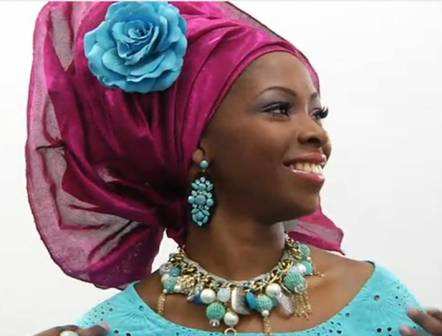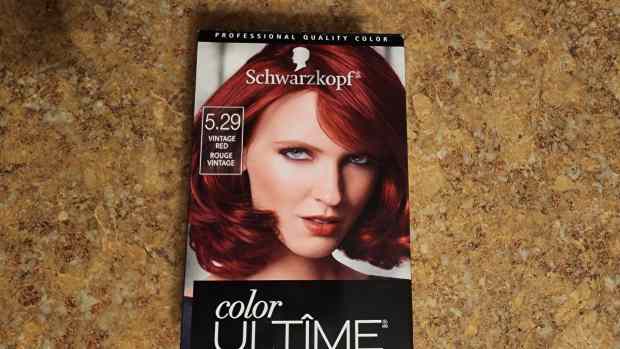Nigerian Women Gele Styles
What Is a Gele?
Gele (pronounced "gay-lay") is a Yoruba term for a woman's head wrap. This piece of clothing can be as simple as a scarf-like head tie or bandana or as elaborate as the arched train of a peacock.
In the Western Region of Nigeria, women can often be seen in their traditional attire of buba, an airy blouse with long sleeves, and iro, the wrapper tied on top of the buba. To complete the look, a woman will wear a head wrap (usually in matching fabric), known as a gele.
Styles and Types of Geles in This Article
Learn about geles in Yoruba and Igbo cultures and the difference between casual and couture geles. Then, read about the following styles:
- Traditional Geles
- Custom-Made Geles: Gele Aso-Oke
- The Bling Geles
- The Auto-Gele
The Culture of the Gele
Though wearing geles is commonplace for women in Nigerian culture, two cultures that are especially noted for wearing the gele in both its casual and sophisticated form are the Yoruba and Igbo cultures.
Yoruba Culture
Yoruba women can always be seen wearing some form of gele at home, in the market, at church, and on special occasions, such as weddings, birthdays, and chieftaincy parties.
Ibo Culture
In Ibo culture, geles are usually worn over a George wrapper and blouse. Thus, the gele has become a fashion statement. In fact, wearing the traditional Yoruba buba and iro without a gele is considered a fashion faux pas.



Types of Geles
Casual Geles
Geles come in many different forms. The very casual ones are usually made of the same fabric as the outfit being worn. They can also be regular polyester scarves or shawls that can sometimes be worn as head ties.
Couture Geles
Couture geles are made for the fashionistas of Nigerian and other African cultures. Geles from brands like Grand Swiss, Super Jubilee, and Hayes are in this category. There are even net gele head ties made from a net-like, see-through fabric.
These are imported geles made with the African woman and culture in mind. They are usually made in Switzerland and come in solid colors or with designs or embroideries.
Recommended
1. Traditional Gele Styles
The wearing of geles by most African cultures and by Nigerian women is not a new fad. Nigerian women have been donning the gele as an accessory that completes the traditional attires since pre-colonial times. Today, the gele continues to emerge in designs, styles, and uses.
It used to be that the gele was only worn with either the buba and iro (the Yoruba woman's traditional attire) or the Igbo woman's George wrapper and blouse. Not anymore! Geles are no longer just for the buba and iro.
Today, you can see the gele being donned on all types of attire, such as skirt suits, pantsuits, and cocktail dresses. The possibilities are endless as the uses of geles continue to emerge.
2. Custom-Made Geles: Gele Aso-Oke
These are geles made especially for special occasions, such as traditional weddings, milestone birthdays, chieftaincy title celebrations, and other special occasion celebrations. Custom-made geles are usually made with aso oke, a woven fabric spurned by hand or machine on demand.
Custom-made aso oke geles are made to the buyer's specifications, which can include the design, fabric consistency, and color. The result is usually a blend of colorful prints and patterns. These colorful print fabrics are then used to make the gele and shawl (which drapes over the shoulder or around the waist) or into the complete outfit, which consists of the gele, shawl, Buba, and wrapper. The price of a custom-made gele is usually more than that of a casual gele.
3. Bling Geles: Accessorizing the Gele
As mentioned earlier, a common way to wear geles is as an accessory over either the Yoruba-style buba and iro or the Igbo-style George (up and down) traditional outfit, which consists of two pieces of matching fabric that wrap around the body. In our contemporary time, modern Nigerian women have found countless new ways to accessorize the gele itself. The newest trend is to add as much bling to the gele as it can take. This is called a "bling gele."
Bling geles are becoming popular among fashionistas who want to take wearing gele to another level. To bling the geles, precious stones, beads, rhinestones, and sometimes silk flowers can be added for a more glamorous appeal. Such a gele can help set the wearer apart when one is celebrating a special occasion, such as a wedding, wedding anniversary, or milestone birthday celebration. Bling geles will add that needed sparkle to your special occasion.
Bling geles adorned with a layer of quality rhinestone trim, usually on the edge, are an increasingly popular style. A bling gele and matching ipele (shawl) usually costs between $100 and $200 USD but can be made custom for a higher price.
4. The Auto-Gele: Geles Made Easy
Auto-geles are a new wave of gele styles born out of the necessity to experience wearing the complete traditional outfit without the stress associated with tying the traditional gele. Auto-geles are pre-tied, usually held in place with Velcro or pieces of the gele fabric, and set in the form of a hat. This makes them easy to wear and remove while retaining the shape of the gele.
The auto-gele makes tying geles a breeze. It only takes minutes to put on and take off, so there is no need for countless trials and errors.
The Gele Dilemma
The ability to tie geles is a problem most Nigerian women face. Tying the gele is an art in itself. It takes great patience and precision. As a child, I always watched my mom tie her gele for special occasions and wondered, "What in the world?" Now I find myself doing the same: getting frustrated over tying my gele because sometimes it just takes forever.







